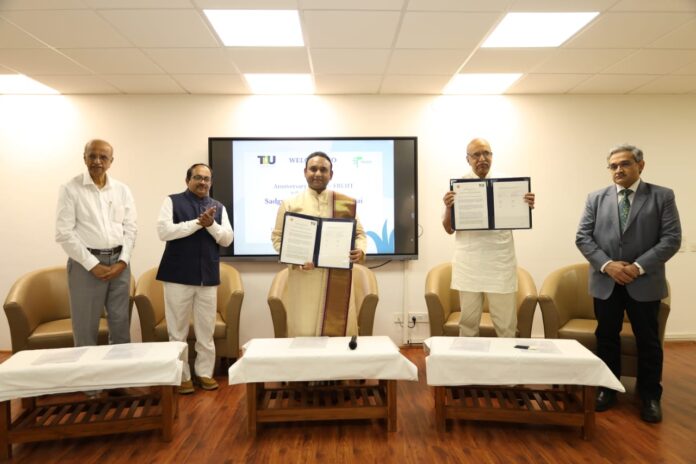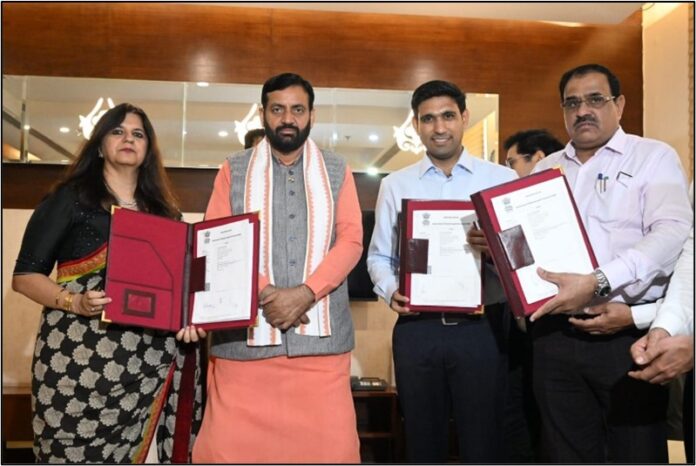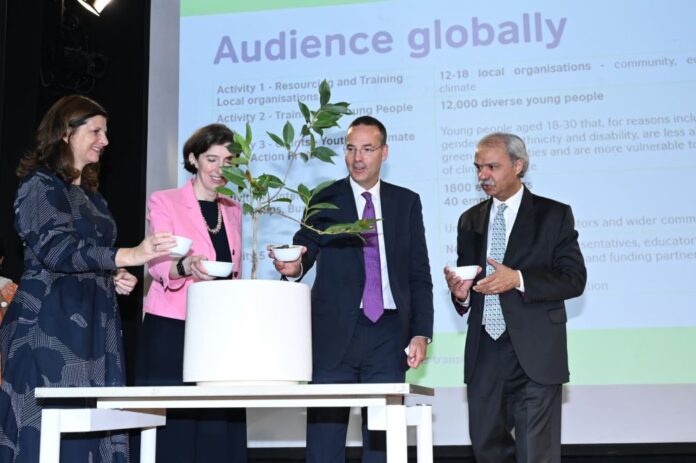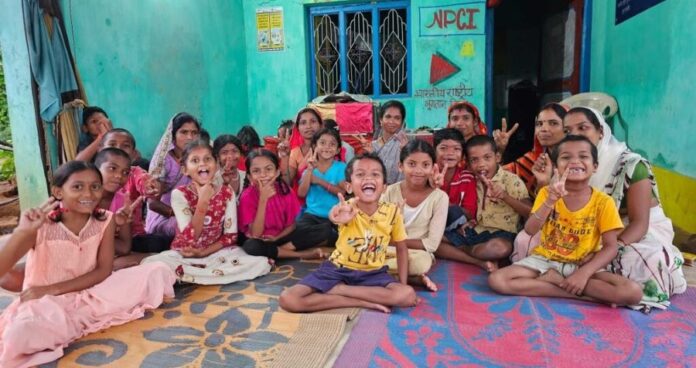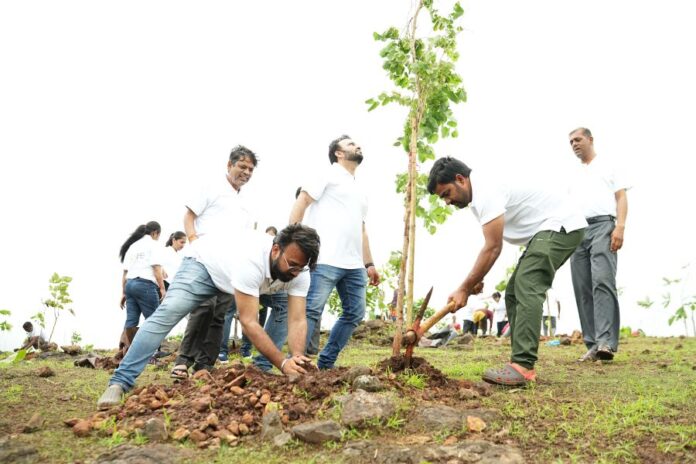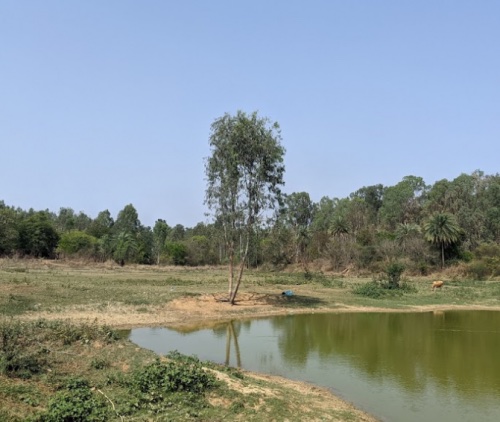CSR: SSSUHE and TDU join forces to combat cancer and diabetes through integrative health
To make a meaningful difference in society, Sri Sathya Sai University for Human Excellence (SSSUHE) and The University of Trans-Disciplinary Health Sciences and Technology (TDU) have signed an MOU for addressing prevalent diseases such as diabetes and cancer through holistic nutritional solutions. This partnership, inspired by Sadguru Sri Madhusudan Sai, aims to expand their combined impact through innovative, cross-disciplinary work, advancing scientific knowledge to improve lives globally.
The MOU outlines a comprehensive framework for co-operation, including academic exchanges, joint research initiatives, and shared use of facilities. The partnership also focuses on developing teaching modules that emphasise human values like ethics, compassion, and empathy in both undergraduate and postgraduate education.
On the partnership, Sadguru Sri Madhusudan Sai – Founder of SSSUHE, shared “For Sri Sathya Sai University for Human Excellence and Sri Madhusudan Sai Institute of Medical Sciences and Research collaborating with Trans-Disciplinary Health Sciences and Technology is an honour and a privilege. This MOU is more than just a list of clauses being exchanged; it is a platform for collaboration between the East and West, bringing together diverse knowledge systems and mindsets to provide the greatest care possible for patients and society as a whole.”
Nutrition research forms a cornerstone of this partnership, with a focus on developing innovative treatments for non-communicable diseases. These solutions will blend ancient Ayurvedic principles with contemporary research, aiming to bring holistic health solutions to the forefront of medical practice.
Dr Darshan Shankar – Vice Chancellor of TDU, said “While TDU has been around for 30-35 years, the work that has been done in the last ten years in the areas of healthcare, education, and nutrition via Sri Madhusudan Sai is an example of what only love can accomplish. While there are many different knowledge systems in the world, including indigenous practices, we have mostly been using Western systems. Nonetheless, we have a vast array of native systems from many nations, including Africa and India. The signing of this MoU will increase the momentum of progressing this ideology.”
Disclaimer: This media release is auto-generated. The CSR Journal is not responsible for the content.
CSR: The Animal Care Organization (TACO) commits INR 100 crores in Haryana to enhance animal welfare landscape
The Animal Care Organization (TACO), a flagship animal welfare initiative under the Anil Agarwal Foundation, dedicated a corpus of INR 100 crores today towards bolstering animal welfare in Haryana through a Memorandum of Understanding (MoU) with the state government. The MoU was signed in the presence of Shri Nayab Singh, Hon’ble Chief Minister, Haryana. As part of the MoU, TACO will undertake the upgradation of the Government Veterinary Hospital in Gurugram into a 24×7 multi-speciality animal hospital and commence the construction of an animal birth control (ABC) unit, laboratory, pharmacy, training centre and shelter for extremely critical animals in Haryana. The facility is spread over 2 acres in Kadipur, Gurugram.
Speaking on this occasion, Chief Minister Shri Nayab Singh said that he is delighted to witness this significant partnership between The Animal Care Organization and the State Government. The effort to transform the landscape of animal welfare in Haryana, earlier with the Faridabad shelter and now the initiative in Gurugram will vastly improve veterinary care services in our state which the residents of Gurugram as well as nearby cities can make use of. He said that “I look forward to seeing the positive impact this initiative will have on the well-being of animals and the overall health of our communities”. The Chief Minister instructed the concerned officers to upgrade the care services for the animals in cow shelters.
Priya Agarwal Hebbar, Chairperson of Hindustan Zinc Ltd, Non-Executive Director at Vedanta and Anchor, TACO stated, “We are delighted to collaborate with the Government of Haryana yet again to augment animal welfare infrastructure in the state. With an investment of 100 Cr for the upgradation of the Government Veterinary Hospital in Gurugram, the construction of a 24×7 multi-specialty animal hospital and our existing shelter in Faridabad, we are committed towards ensuring availability of state-of-the-art veterinary care in Haryana. I am thankful to the Chief Minister for his continued support as we work towards the vision of One Health.”
The MoU marks a monumental step towards the improvement of animal welfare services in Haryana with the state government inking a 10-year long collaboration with the Anil Agarwal Foundation. As part of the collaboration, TACO will also deploy an ambulance and an advanced mobile health van to provide emergency care services at doorstep.
Notably, TACO’s initiatives encompass a holistic approach to ‘One Health’, recognizing the interconnection between people, animals, plants, and their shared environment. The organization’s shelter in Faridabad, Haryana, is home to 160+ animals, including cows, bulls, and dogs, focusing on rescue, rehabilitation, advanced veterinary care and overall well-being. Since its inception in 2022, it has treated more than 60,000 animals through its health camps, rescued almost 5,000 animals during the Delhi and Haryana floods, and supported over 460 members of farmer community through animal OPD services. Furthermore, TACO’s dedication extends to education and training through the TACO Academy, which conducts sessions for veterinarians and paraprofessionals. TACO also supports and strengthens veterinary healthcare services through OPD and ambulance services.
Disclaimer: This media release is auto-generated. The CSR Journal is not responsible for the content.
Climate Skills: Seeds for Transition India project launched
New Delhi, India: British Council, the UK’s international organisation for educational opportunities and cultural exchange, in partnership with HSBC India, today launched the “Climate Skills: Seeds for Transition India” project. This initiative aims to equip young people and communities in India with the skills needed to be resilient to the impending impact of climate change and to contribute to the opportunities of the transition to net zero.
The programme is part of British Council’s long-term international effort to establish a global climate skills approach that empowers youth, informs decision-makers about alternative climate education strategies, and addresses grassroots, national, and global climate challenges. It seeks to go beyond discussion and partner with governments, communities, and institutions to create tangible solutions for the future generation to better understand the impact of climate change across all aspects of life and equip them with the necessary skills needed in the wake of climate change.
The project works with young people aged 18-30 in five countries including India, Brazil, Indonesia, Mexico and Vietnam.
Scott McDonald, Chief Executive, British Council said, “At the British Council, we are committed to empowering young people with the skills and knowledge necessary to tackle the pressing challenges of climate change. Our partnership with HSBC on the ‘Climate Skills—Seeds for Transition India’ project reflects our shared vision of a more sustainable future. By equipping youth with essential climate resilience skills, they can lead the transition to greener economies and drive positive change in their communities. These skills are increasingly critical as we consider projections for the life of our planet and its natural resources.”
Speaking on the partnership, Hitendra Dave, Chief Executive Officer, HSBC India, said, “We have a long history of collaboration with the British Council and the co-creation of programmes that help achieve a larger social purpose. Our partnership on the Climate Skills programme will focus on youth and education, reflecting our joint commitment in equipping the younger generation to understand and adapt to climate change. Together, we aim to improve climate literacy and employability among marginalized youth communities in India.”
Running from July 2024 to February 2026, the project aims to raise awareness among key stakeholders, including government institutions, policymakers, higher educational institutions, and young people, encouraging participation and engagement. It seeks to directly engage 2,000 youth and train 300 master trainers in India/in each delivery country.
The initiative highlights the British Council’s leadership in climate action and its upcoming global climate change strategy. This UK-led international collaboration aims to resource local organisations, empower youth to take climate action, and provide alternative climate education approaches. A unique aspect of the programme is its focus on empowering both urban and rural youth by integrating youth-led social action with climate education. The programme’s international connectivity aims to deliver locally led interventions and connects them with a global network across five countries.
The launch event, scheduled for July 11, 2024 featured a climate film screening, an official launch by Scott McDonald, Chief Executive, British Council and Hitendra Dave, Chief Executive Officer of HSBC India. Lindy Cameron CB OBE, British High Commissioner to India, Alison Barrett, Director India, Monomita Nag-Chowdhury, Programme Lead of The Climate Connection from the British Council; Rajiv Gandhi National Institute of Youth Development; Yusuf Kabir, WASH Specialist I Focal Point for Climate, Environment & DRR, UNICEF; and Rishika Das Roy, Lead-Sectoral Strategy and Investment at India Climate Collaborative will be part of the discussions.
“Climate Skills” equips young people around the world with the fundamental skills they need to be part of the transition from high carbon to low carbon economies. Through a collaborative effort between the British Council and HSBC India, the programme trains local community organisations to better support young people who are disproportionately affected by climate change.
Participants come from communities that encounter major systemic challenges in contributing to the growth of their country’s green economy. The programme will delve into climate literacy, helping to foster a deeper understanding of shared environmental challenges and solutions, and nurture core skills and leadership abilities, providing a strong foundation for personal and professional growth.
Disclaimer: This media release is auto-generated. The CSR Journal is not responsible for the content.
How floral waste is boosting circularity in economy in India
As India moves towards sustainability and a circular economy, the focus on waste to wealth is the way to be. Implementing composting pits in temples and involving Temple trusts and SHGs in recycling efforts can create significant employment opportunities. Outreach programs to educate priests and devotees about not dumping floral waste in rivers can help encourage waste reduction. The “Green Temples” concept can be integrated into policies to transform temples into eco-friendly spaces. Promoting digital offerings or biodegradable materials instead of traditional flowers can also help reduce floral waste. The National Horticulture Board can be involved in tracking and managing floral waste in green spaces like parks etc.
The floral waste sector in India is experiencing new growth, marked by its multifaceted benefits. Not only is it providing meaningful employment opportunities for women, but is also effectively diverting waste from dumpsites, contributing to environmental preservation.
Floral waste, collected from the spiritual sites mostly biodegradable, often ends up in landfills or water bodies, causing health hazards and harming aquatic life. According to a UN Climate Change report, the river Ganga alone absorbs over 8 million MT of flower waste annually. Under the Swachh Bharat Mission-Urban 2.0, several Indian cities are bringing innovative solutions to the table. Social entrepreneurs are stepping in to recycle flowers into valuable products like organic compost, soaps, candles, and incense sticks.
The Swachh Bharat Mission is spearheading a transformative journey towards sustainability, where the ethos of circular economy and waste-to-wealth reign supreme. Amidst this paradigm shift, floral waste emerges as one of the significant contributors to carbon footprints, prompting collaborative efforts among cities and startups to tackle this challenge head-on.
With 75,000 to 100,000 daily visitors at the Ujjain’s Mahalakaleshwar Temple, around 5-6 tonnes of floral and other waste are produced daily. Specialized ‘Pushpanjali Econirmit’ vehicles collect this waste and then it is processed at a 3TPD plant, turning it into eco-friendly products. 16 women from the Shiv Arpan Self-Help Group create various high-quality items from the floral waste and have been employed for the same. Additionally, the waste is converted into briquettes and compost, for the local farmers and as also works as biofuel. According to the Ujjain Smart City 2022 report, 2,200 tons of floral waste has been treated to date, and a total of 30,250,000 sticks produced so far.
Siddhivinayak Temple sees nearly 40,000 -50,000 devotees daily peaking 1,00,000 devotees on some given days, offering 120 to 200kgs of floral. Mumbai-based designer house ‘Adiv Pure Nature’ has initiated a sustainable venture, turning the temple’s discarded blooms into natural dyes to create different textiles in the form of fabric yardage, garments, scarves, table linens and tote bags. They collect floral waste thrice in a week which accounts to 1000-1500 kg /week. After segregation, a team of artisans transform the dried flowers into natural dyes. Beyond the commonly used marigold, rose, and hibiscus, the team also utilizes coconut husks to create natural dyes and produce textured prints through steam.
Tirupati Municipal Corporation handles over 6 tons of floral waste daily from temples every day. The city collects and upcycles floral waste into valuable & reusable products. 150 women from self-help groups have been employed through this. The recycling is done at the Tirumala Tirupati Devasthanam Aggarbatti 15-ton capacity manufacturing plant. The products are packaged with recycled paper and plantable paper embedded with Tulsi seeds for a zero-carbon footprint.
Kanpur based Phool, the floral waste recyclers have been tackling the massive temple-waste problem by collecting floral-waste from temples from various cities on a daily basis. Phool collects nearly 21 MT of floral-waste weekly (3 TPD) across the five prominent temple towns of India including Ayodhya, Varanasi, Bodh Gaya, Kanpur and Badrinath. This waste is upcycled into items such as incense sticks, incense cones, Bamboo-less incense, havan cup etc. The women employed by Phool enjoy a safe working space, fixed salaries, and benefits like provident fund, transportation, and healthcare. With deep-tech research, the startup has developed ‘Fleather’, which is a viable alternative to Animal leather and it was recently awarded PETA’s best innovation the Vegan World.
Hyderabad-based startup, ‘HolyWaste’ has revitalized floral waste through a unique process called ‘Florjuvination. Founded in 2018, the company’s founders Maya Vivek and Manu Dalmia partnered with vendors, temples, event organizers, decorators, and flower waste generators. They collect floral waste from 40 temples, 2 flower vendors, and a market area to create eco-friendly products like fertilizers, incense sticks, scented cones, and soaps. Currently, Holy waste is preventing a humble quantity of 1,000 kgs/week from clogging the water bodies or rotting in the landfills.
Poonam Sehrawat’s startup, ‘Aaruhi’, collects floral waste from over 15 temples in Delhi-NCR, recycling 1,000 kg of waste and earning over Rs 2 lakh monthly. Sehrawat has trained more than 3,000 women to create products from floral waste.
Disclaimer: This media release is auto-generated. The CSR Journal is not responsible for the content.
Chhattisgarh school children to receive primary education in 18 local dialects
In a move to ensure inclusivity in education, the Government of Chhattisgarh led by Chief Minister Vishnu Deo Sai has decided to impart primary education in 18 local dialects mainly in the tribal areas of the state. Chief Minister Vishnu Deo Sai has directed the education department to develop and distribute bilingual books in 18 local languages and dialects.
The goal is to enhance access and quality of education especially in tribal communities so that children can receive education in their mother tongue and stay connected with their culture.
National Education Policy 2020
The move is in line with the National Education Policy 2020 (NEP). As per the three-language formula in NEP 2020, every student in India should learn three languages: two native Indian languages, including one regional language, and English.
“The initiative is a part of the broader vision under NEP (National Education Policy) 2020 to make education more inclusive and accessible to children in their native languages”, as per an official of the Chhattisgarh government.
The CM says
The textbooks and teaching material would be translated into local dialects and teachers would also be trained in these languages as per orders of the Chief Minister.

“The new initiative of providing education in local language will also be helpful in preserving local culture and traditions,” the CM said while attending a programme at Bagiya village in tribal-dominated Jashpur district. The chief minister also said that under the PM Shri programme, 211 schools are being developed as model schools in the state.
Dialects selected
“In the first phase, courses will be prepared in Chhattisgarhi, Sargujia, Halbi, Sadari, Gondi-Dantewada and Kudukh. For this, the help of litterateurs, folk artists and compilers from across the state will be taken. Apart from this, cooperation will also be taken from senior citizens and teachers,” informed School Education Secretary Siddharth Komal Pardeshi.
Primary education imparted in the local dialect is expected to encourage more people to enroll their children in schools. However, even though the Education Department plans to conduct primary school exams in local languages and dialects, for higher classes, exams will still be conducted in Hindi and English as usual.
Population Census in India: Understanding the Delay on World Population Day 2024
Data is the new gold. Data is required to identify problems, frame policies, recognise beneficiaries and deliver solutions to them. Over the last three decades, societies across the globe have made tremendous progress in improving the processes of gathering, analysing and using data. This has improved social welfare efforts by government and other entities.
July 11 is observed as World Population Day across the globe. The day is aimed at highlighting issues related to population. The day is apt for highlighting the importance of conducting a population census, and the consequences of delaying it.
India conducts census every 10 years. The last census was supposed to occur in the year 2021. However, because of the COVID-19 pandemic, it was delayed. Now, however, there is no reason to delay, however the government is dragging its feet, probably looking to delay it even further. Let us see why that might be the case?
What is Population Census?
A population Census is the process of collecting, compiling, analysing and disseminating demographic, social, cultural and economic data relating to all the persons residing in the country, at a particular time in ten years interval.
Many countries in the world, including India, have constitutional provisions that require the conduct of a population census at regular intervals. It is essential to conduct population census because it provides the government with accurate and comprehensive data on various demographic, social, and economic aspects of its population. This serves as a fundamental data source for evidence-based policymaking, governance, and public administration.
What are the benefits of Population Census?
1. Policy planning and decision-making
The Census data helps the policymakers and those in position of power with by providing them accurate and reliable information about the population, enabling them to formulate effective policies, allocate resources, and plan for various sectors such as education, healthcare, infrastructure, and social welfare.
2. Resource allocation
Through census, the policymakers can identify the marginalised and vulnerable sections of the society. Once they are identified, the government can conduct equitable distribution of resources and services based on population size and demographic characteristics. Thus, the census data assists in determining the allocation of funds for public services like schools, hospitals, roads, and other essential facilities.
3. Socioeconomic analysis
Census data helps the researchers, academics, and analysts in studying demographic trends, population distribution, migration patterns, and socioeconomic characteristics. It helps in understanding social dynamics, identifying disparities, and developing strategies to address social and economic issues.
4. Electoral representation
Census data plays a critical role in determining the number of seats and boundaries for electoral constituencies. It ensures fair representation and proportional allocation of political power based on population size and distribution, thus providing the country with a fair democratic government.
5. Monitoring population changes
Regular population censuses provide a comprehensive and up-to-date snapshot of the population of a nation. They help in monitoring changes in population growth, fertility rates, mortality rates, migration trends, and other demographic indicators over time.
Why is the census being delayed?
India is a democracy which means that the government is elected by a majority of its citizens with the broad principle of ‘one citizen-one vote-one value’. The number of seats in the Lok Sabha based on the 1951, 1961 and 1971 Census was fixed at 494, 522 and 543, when the population was 36.1, 43.9 and 54.8 crore respectively. However, it has been frozen as per the 1971 Census in order to encourage population control measures so that States with higher population growth do not end up having higher number of seats. This was done through the 42nd Amendment Act till the year 2000 and was extended by the 84th Amendment Act till 2026. Therefore, the population based on which the number of seats is allocated refers to the population as per the 1971 Census. This number will be re-adjusted based on the first Census after 2026.
In a normal course of events, the delimitation process for the number of seats, boundaries of territorial constituencies and determining the reserved seats for SC and ST would have happened based on the Census of 2031 as it would have been the first Census after 2026. However, since the 2021 Census has already been delayed, and the fact that the year 2026 is only 2 years away, there have been talks about delaying the process of census to conduct the impending delimitation exercise at the earliest possible opportunity.
The political stand
The central idea behind conducting a delimitation exercise is to ensure that every state has equitable representation in the Lok Sabha based on its population. As we consider the formula worked out for delimitation, It is important to understand that seats for some states might fall and for some states, it might increase. If the seats are allocated according to the projected population figures in 2026, Uttar Pradesh will gain an estimated 14 seats and the constituencies in Madhya Pradesh will rise from 29 to 34. However, Tamil Nadu will observe its number of constituencies fall from 39 to 30 and Kerala’s constituencies will drop from 20 to 14. Given that the current incumbent BJP’s strength is in the Hindi belt, the Opposition parties are concerned that delimitation may end up benefitting the party, which is why they are keen on delaying census even further.
Integrating Tech Into The Classroom: How Teachers Can Support Students
Teaching is a noble profession that gives you the opportunity to enrich and educate the minds of tomorrow. While being a teacher comes with challenges including problematic student behaviour and funding issues in schools, moments like witnessing a child grasp an important concept for the first time make it all worth it.
One way to be a more effective teacher and help your students learn more efficiently is to use technology in the classroom. Tools like virtual reality software and podcasts, when used properly, are much more engaging than traditional teaching methods and can be a great way to help your students retain information and have fun at the same time.
This article will take you through some practical ways to integrate technology into the classroom. Keep reading to find out how you can be a more effective teacher in the modern day.
Expose Students to a Wide Range of Software
The ability to work with a wide range of tools is best learned at an early age, and there’s no better place to do this than the classroom. That’s why teachers of today are encouraged to expose their students to a wide range of software, including file converters, video editing tools and AI platforms. Students will benefit greatly from using a PDF editor and other software that they’ll be encountering on a regular basis as they move through the educational system and eventually join the workforce.
And speaking of using these tools in hands-on capacities or even in real-world contexts, teachers are also encouraged to provide some time for students to use these tools on their own or even voluntarily in their own projects, as hands-on experience is vital to acquiring these and other digital skills.
PowerPoint Games and Quizzes
PowerPoint is a tool that’s been around for a while and can be used to create a range of interactive games and quizzes, which are a fun and engaging way for teachers to integrate tech into the classroom. Students will be much more likely to concentrate on a lesson if you add a competitive dimension, and PowerPoint games are a fantastic way to do this.
If your students are in the process of revising for an exam, you can drop in a quick PowerPoint quiz in the middle of one of your lessons. You can offer candies or other small tokens as prizes. A well-made PowerPoint game lets your students have fun while also internalising whatever topic you’re trying to teach them.
Take a Virtual Excursion
Virtual reality is becoming more common in the classroom, and one way to use VR to engage students is to take them on a virtual field trip. Exploring global landmarks like the Eiffel Tower, the Great Barrier Reef, the Pyramids and other famous spots allows you to build students’ cultural knowledge without having to pay for a physical trip.
In 2024, it’s easier than ever to implement VR in the classroom. There are many VR devices out there – some of them surprisingly affordable – that create vibrant, lifelike learning experiences for your students.
Use Podcasts
Podcasts are taking the world by storm and can be an excellent way to supplement student learning. If you’re currently on a particular topic, sending your students an interesting, related podcast before class is a great way of building interest.
The great thing about podcasts is that there are so many out there, so you’re sure to find one on almost any topic. If you’re a science teacher currently teaching the laws of motion, for instance, there are loads of physics podcasts you can use as teaching material.
Expose Students to Coding Apps
While coding was once the domain of web developers, computer scientists and other related jobs, more and more professions are requiring a basic level of coding proficiency. Teaching your students how to code early on will give them an important advantage in the workplace, and coding apps are a great way to do this.
There are various age-specific coding apps out there that you can incorporate into your curriculum. A great way to use them is as part of your growing STEM curriculum. Coding apps teach students how to code in a progressive way that’s also engaging. These apps are particularly helpful if you have limited coding experience and aren’t confident in your ability to teach it on your own.
Use Technology for Student Feedback
The best litmus test for a lesson, teaching method or curriculum is how well they help students learn, and receiving feedback from the students themselves is a great way to assess all of these. Student feedback can help teachers and school management optimise curriculums, change how they teach and provide extra support to specific students.
Consider using online surveys and polls to get a handle on how students feel about their experience in your classroom. You don’t have to wait for the end of the semester to do this: a quick survey at the end of every class can give you a real-time view of how your students are doing and what you can do to improve as a teacher.
Set Up Tech Learning Stations
Online learning has its challenges – and different challenges may impact different students depending on their learning style. A way to mitigate these is by creating a hybrid learning environment that includes physical teaching sessions and digital learning stations that allow students to learn independently.
A tech-based learning station allows students to learn at their own pace. If a student finishes a task early, they can hop onto a digital learning station to learn about optional topics or get a preview of the next lesson. A learning station might include learning material like educational videos, educational games and coding apps. It might also be hooked up to the internet to allow students to do their own research and access online tools.
~ Just like everything else, the way in which students learn is constantly evolving, and teachers need to adapt to remain effective. One of the best ways to do this is by mastering how to use tech in the classroom.
In this article, we’ve gone through some key ways educators can incorporate various technological tools into their teaching. Start applying these tips to your own classroom today to create a more engaging learning environment for your students.
CSR for environment: 50,000 Trees to be planted under Go Green Kasara initiative
Mumbai, India: Rustomjee Group, a leading real estate developer in Mumbai, announces its ambitious Plantation Drive, “GO GREEN KASARA”. This initiative marks a major step by Rustomjee Group towards its commitment to sustainability, focusing on the restoration and preservation of Kasara’s natural ecosystems by planting a total of 50,000 trees.
The first phase of this initiative began on July 5th, 2024, showcasing Rustomjee’s proactive dedication to environmental conservation and community welfare. The project aims to have all 50,000 trees successfully planted by March 2025.
Tree plantation in Kasara, Maharashtra, enriches biodiversity by enhancing air and water quality and promoting the resilience of native species to climate change. The selected native plants, including flowering and fruit-bearing trees, are well-suited for Kasara’s hilly and hot climate. These plantations also help mitigate soil erosion, raise groundwater levels, and provide habitats for diverse species. The tree species selected for this initiative include Ficus benghalensis (Wad), Phyllanthus emblica (Awala), Tectona grandis (Saag), Syzygium cumini (Jambhul), Oroxylum indicum (Tetu), Melia azedarach (Vehle), Cassia fistula (Bahawa), Bamboo, Annona squamosa (Sitaphal), Ziziphus (Ber), Carica papaya (Papaya), Moringa oleifera (Drumstick), Chrysophyllum cainito (Star Apple), Morus alba (Mulberry/Shahtoot), Psidium Guajava (Safeda Guava), Manilkara zapota (Chiku Kalapati), Tamarindus indica (Tamarind), Artocarpus heterophyllus (Fanas/Jackfruit), Ficus carica (Anjeer), and Mangifera indica (Mango).
The plant selection for this drive has been thoughtfully planned based on consultations with ecological experts, horticulturists, and landscape architects. The team of experts includes Kishor Chorge, Horticulturist at Rustomjee; Mrunal A Patil, Landscape Architect at DH&A Architects; and Mr. Prafull Borse, Horticulturist at BEO Farms and Agro Tourism. Their insights have been invaluable in ensuring that the chosen species will thrive in Kasara’s environment and contribute to its ecological balance.
Rustomjee’s Plantation Drive is a collaborative endeavour, partnering with the NGOs – “Grow Billion Trees and CAWSE Foundation”, which provide volunteers for the initiative. The Rustomjee team will take full responsibility for the ongoing care of the plants, ensuring their growth and sustainability. By engaging stakeholders at every level, the initiative fosters a sense of ownership and responsibility towards environmental conservation. Local communities are empowered to participate in tree-planting activities, fostering a deeper connection with their natural surroundings.
“Rustomjee’s Plantation Drive in Kasara exemplifies our unwavering commitment to environmental sustainability and community welfare. By planting 50,000 trees, we are significantly enhancing the region’s biodiversity and contributing meaningfully to the fight against climate change. Our efforts highlight our enduring vision of a harmonious coexistence between development and nature. This initiative not only reflects our dedication to creating a greener, healthier future for Kasara and its residents but also underscores our responsibility as corporate citizens to foster sustainable development,” said Boman R. Irani, Chairman and Managing Director of Rustomjee Group.
As the Plantation Drive continues to unfold, Rustomjee Group’s collaboration with local communities, NGOs, and government bodies exemplifies its commitment to sustainability. This initiative underscores Rustomjee Group’s role as a responsible corporate citizen dedicated to preserving Kasara’s natural heritage for future generations.
Disclaimer: This media release is auto-generated. The CSR Journal is not responsible for the content.



